The eruption of militancy in 1990 created a situation that is difficult to even imagine now, thirty years down the road. The situation had restricted reportage in Srinagar and everyone was in survival mode when the exodus of Pandits took place. However, this facet of the Kashmir tragedy was well documented by the resourceful Delhi media. Here are three detailed reports that appeared in three major publications outside Kashmir
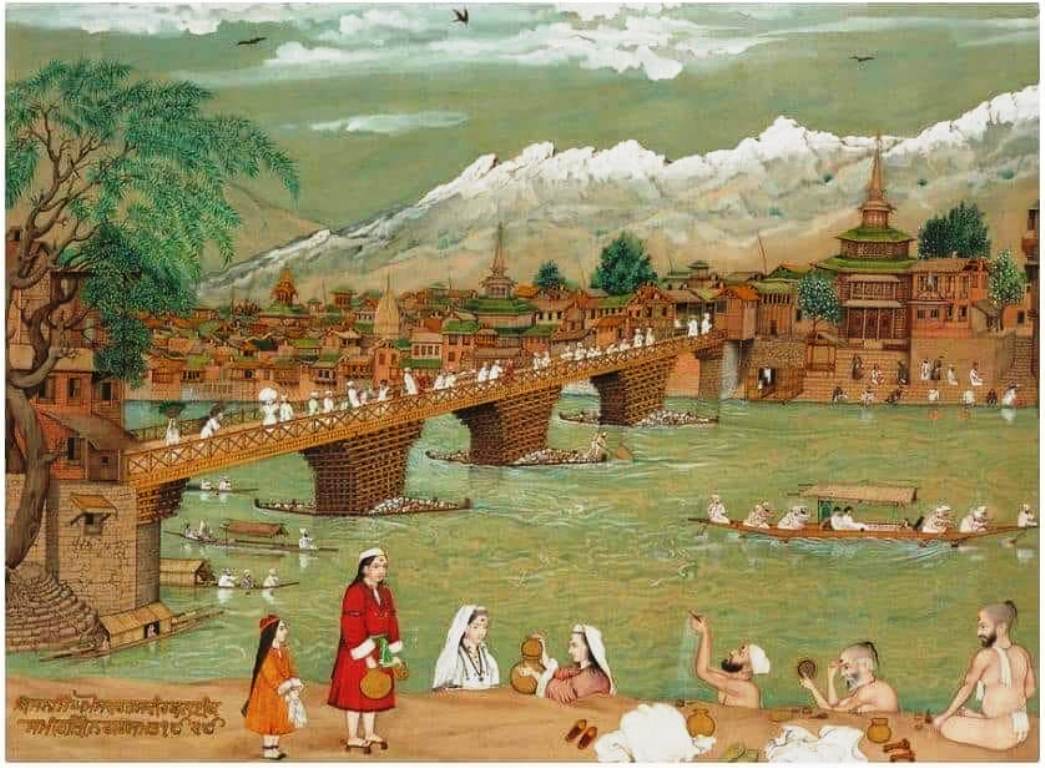
Migrating To Safety
India Week,
February 15-19, 1990
Aasha Khosa reports from Jammu on how intimidated, terror-stricken non-Muslims from Srinagar have come down to the region after the recent wave of violence in the valley.
Even while they toil day in and day out searching for shelter and the means to rekindle their hearths, the memories of that night still haunt them. About 2,000 families from both the rural and the urban areas of Kashmir valley have moved down to Jammu for what they call “permanent settlement”. Leaving behind their homes, property and even jobs, these migrants, mostly Hindus, are still under the spell of fear which has gripped the valley till yesterday virtually ruled by the pro-Pak militants.
Without disclosing their full identity, some of them narrated the experiences, which led to the mass exodus. Manisha, a 21-year-old post-graduate lived in a palatial bungalow in Srinagar city’s Magarmal Bagh locality. She and her parents escaped from Srinagar in a luggage truck. Manisha said: “The deafening calls on loud speakers, probably fitted in the mosque near our house, are still fresh in my mind. Allah-o-Akbar and other Islamic slogans rent the air. Even though the militant tone of the slogans was scary, we consoled ourselves that it did not mean any harm to the non-Muslims. But then, suddenly, some immature and young voices besieged the megaphone system and then there were slogans calling for raiding the houses of non-Muslims.”
Her mother adds: “In the absence of a male member in the family – they had gone in hiding to avoid participation in the rally to be held against curfew restrictions – we were scared. I bolted the house and locked my daughter in a room. To tell you honestly, I was even prepared for self-immolation in case the threats issued from the loudspeakers were realized.” Manisha is looking for a job and is sure she will never go back.
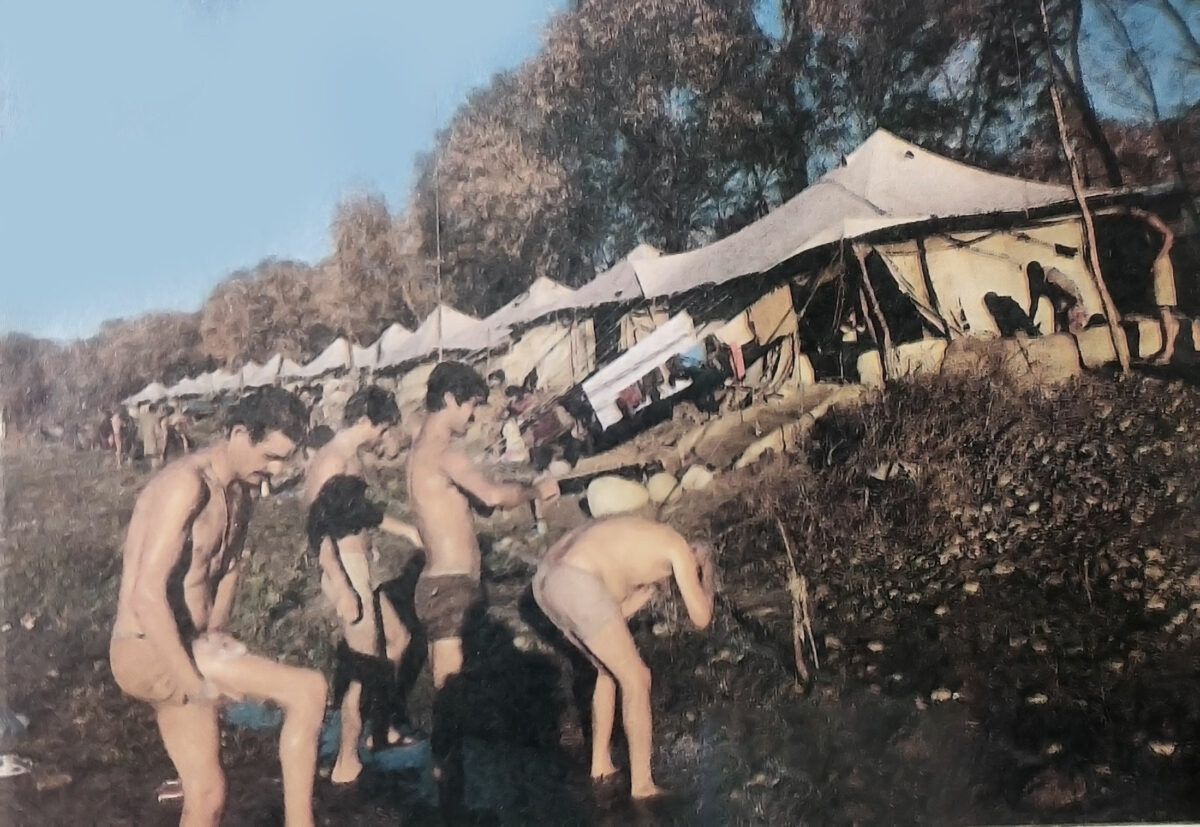
Abducted
A young employee working with the wireless section of the state police as a technician is reluctant to recall his experience for fear of retribution from the militants. Three masked men broke into his house in a downtown locality in broad daylight and asked him to go along with them. At gunpoint and in the presence of all his family members, he was taken away. He returned after three days. In the meantime, the family was too scared to even report the matter to the police. They did not dare disclose the matter to even close friends. “All we did was hope against hope,” said his brother.
Another employee of the post and telegraphs department in Srinagar recalls how he was beaten up by some urchins when they found him loitering around on the bundh. He was taken to the mosque and kept there for the night. “I sat in a corner while the huge congregation, mostly comprising young boys, raised militant slogans throughout the night. In fact, the atmosphere inside became such that I began fearing for my life. Next day, I, along with others, was taken outside to march in a procession protesting against the curfew orders.”
Reports pouring in from Srinagar, along with the accounts of the people who have shifted out from there, suggest that the militants had mobilized the public for the January 21, protest against curfew restrictions by selling them the idea that it would be the final showdown between them and the government. The latter, on the other hand, has started justifying its existence of late. At least 30 people were killed on the day when paramilitary forces opened fire on the mobs defying curfew restrictions in various parts of the city. “The militants did not show up,” lamented a citizen of Srinagar’s walled city who felt humiliated to have been taken in by the militants’ propaganda.

Militant slogans
Another young girl belonging to one of the Hindu-dominated downtown localities said: “Even now when I think of that night, a shiver runs down my spine. (The night she and the others are referring to is the one preceding the day when 30 persons were killed when paramilitary forces fired on mobs defying curfew orders). All the women in our locality were huddled together in a room as the mikes-fitted in the mosque started blaring out militant slogans. We reinforced the bolted door with more nails to delay the forcible entry of the raiders. We all wore sports shoes and searched for an escape route.” However, nothing happened.
The next day the girl was packed off with a number of other women in a taxi to Jammu. She is staying there with a relative, waiting for her parents to join her.
In the villages, the story is even worse. The last time the villagers had deserted their homes in search of security in the city was in 1947-48 when, in the wake of raids from the Pakistani infiltrators, they had moved to Srinagar city. The first time communal riots broke out in the entire Kashmir valley was when a Muslim boy married a Hindu girl.
This time, initially, tension prevailed in Anantnag town and the villages surrounding it. However, soon the tension percolated down to all the villages in the valley and, according to the migrants, at many places religious places were used to fan propaganda against the government and, at places, against the non-Muslims. In a particular village of Badgam district where there are only three non-Muslim families, there were threats of “axing them to death”. Said a young housewife of that village: “No doubt every Muslim in the village assured us of help in case anything did happen, but, I think, they too would be too scared to act in such an eventuality. So we decided to move.”
Muslims, too
But it should not be inferred from all this that only the non-Muslims are in the grip of the fear which, despite governor Jagmohan’s assurances, still pervades the Kashmir valley.
According to reports, even Muslim families have shifted their women to safer places and taken all measures to ensure their safety. The worst-affected are children who are confined to their houses thanks to the disturbances and curfew at a time when they should be enjoying their annual winter vacations.
Said a young Muslim who is looking for accommodation in Jammu: “It is easier for the non-Muslims. At least they feel secure in Jammu, the Muslims are tied down to Kashmir valley. The affluent Muslims who fear a Hindu backlash in Jammu can safely move to Delhi or other places. But what about the less affluent?”
According to reports, a number of government employees working in state and central intelligence set-ups want to be moved out from the valley. They have all applied for transfers. The central departments, too, are facing similar problems, thanks to the militants’ call for boycott of the central services and their threat to; women employees to quit since “Islam does not allow women to work”. The central departments, however, are sitting pretty over the innumerable applications for transfers out of the valley. According to sources, Jagmohan has issued instructions to the state authorities not to transfer anyone for such a reason. Yet state measures for their rehabilitation are yet to be pronounced.
Flooded
The exodus from the valley has added to the problems in Jammu. Normally, the winter capital of the state is flooded with people from Kashmir during the biennial move of the government. But, this year, the situation is different.
This year the Kashmiri’s are too busy hunting for shelter and jobs to be overjoyed at the change of scene. Every day, state road transport corporation buses and private taxis bring loads of Kashmiri’s to Jammu while the outgoing traffic from Jammu comprises mostly Muslims, mostly the families of employees who move along with the government.
Accommodation is scarce and, as a result, rents of private houses have gone up. No governmental help, not even a voluntary organization has come forward to help these migrants. The Shiv Sena, quick to exploit the situation, did make an offer, but the migrants have discreetly avoided their help. “The situation in the valley will deteriorate further if we let anyone raise the issue here,” said a young journalist who, too, has abandoned his home in Srinagar and shifted here.
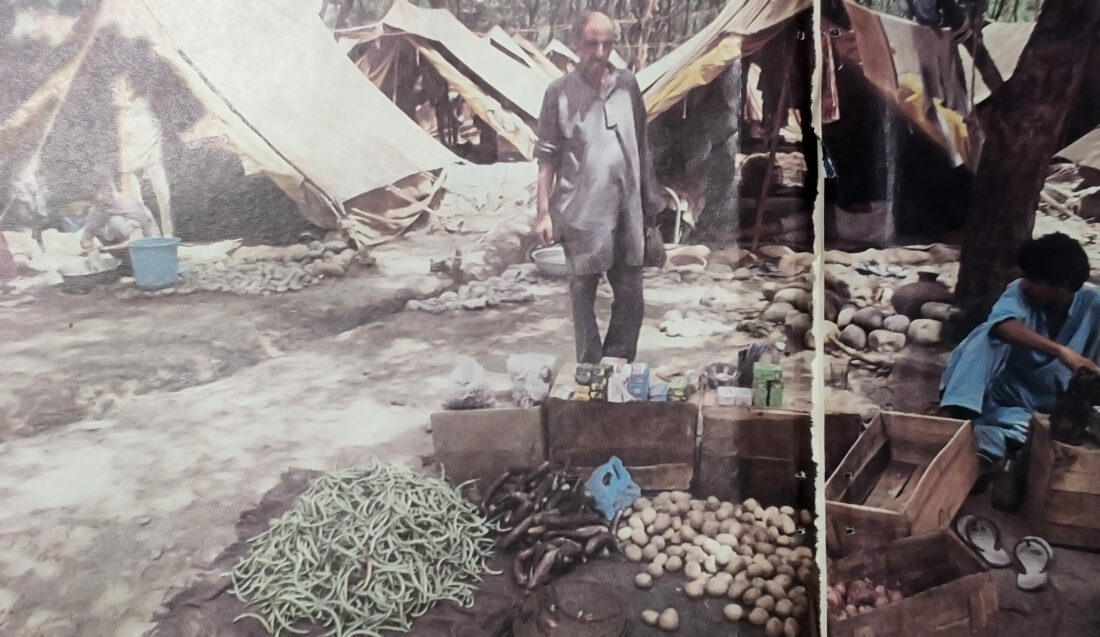
An Alarming Exodus
India Today,
March 31, 1990
Kashmiri Hindus flee the valley creating a communal crisis
by Pankaj Pachauri in Jammu with Nisha Puri
In 1947, when Pakistani raiders pillaged the homes of Kashmiri Hindus, Sohan Lal was a seven-year-old child in the border district of Kupwara. He lost his father and eight relatives before fleeing to Srinagar. He returned home after two years. The neighbourhood mason, carpenter and shopkeeper- all Muslims – helped him start afresh. He became a teacher in the local school and lived with his family in a house which, over the years, expanded to 15 rooms.
Last fortnight, Sohan Lal fled Kupwara again. There was no raid on his house. No killings. Not even a threat. But when after Shivratri, his relatives from Anantnag and Srinagar did not visit him as they had done every year, Sohan Lal panicked. He locked up his house, gave the keys and his cattle to a Muslim friend and departed with nine other families for a relief camp in Jammu. Says Sohan Lal: “There was no communal tension. It took us six days to leave everything because of fear. And we cried – my family and that of my Muslim friend.”
On his third day in Jammu, Sohan Lal was exposed to an alien phenomenon. He was part of a 10,000-strong procession led by VHP acting President, Vishnu Hari Dalmia. As the protestors wound their way through the streets of Jammu, the sloganeering became distinctly communal. “Security for Hindus in Kashmir” and “Down with Pakistan” soon gave way to “Har-har Mahadev” and “Bharatvarsh main rehna hoga, Vande Mataram kehna hoga” (If you want to live in India, you have to chant Vande Mataram). If there were any doubts that RSS cadres had taken over the demonstration, they were put to rest when a placard that read “Down with Indian secularism” was raised. Sohan Lal had never heard such a communal outburst.
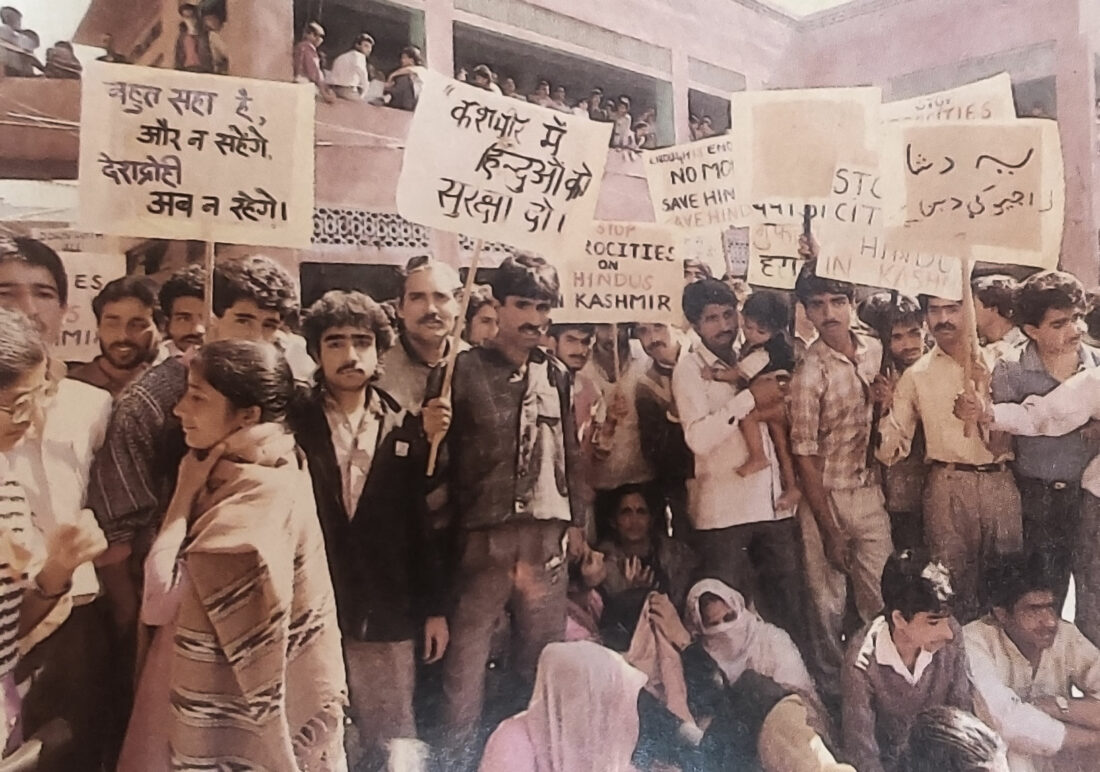
But Sohan Lal was just one among over 10,000 Hindu families, which have left the valley – and whose insecurities organizations like the RSS and VHP are trying to exploit. And should they fall into the net of communal propaganda, they can reverse the political efforts for normalizing the Kashmir crisis. Says Home Minister Mufti Mohammad Sayeed: “We can’t afford more complications.” Adds an IAS officer in Jammu: “Our hands are full with the migrants. The last thing we want is a communal flare-up.”
In fact, by the time the all party delegation reached Srinagar, about 40,000 people had reached Jammu, 2,500 Udhampur, 600 Kathua and about 2,000 Haridwar and Delhi. In each of the dozen filthy camps in Jammu and in the decrepit Kashmir Bhawan in Delhi, most refugees said that though they were initially reassured by Jagmohan’s installation as governor, the militancy was unstoppable. Said a doctor from Srinagar: “How can we raise slogans for Islamic rule or say Pakistan zindabad?” Understandably, the militant’s movement has isolated the valley’s 1.2 lakh Hindus.
The migrants’ woes were doubled by the unpreparedness of the Jammu administration. The first trickle of refugees began in mid-January. They took shelter at Geeta Bhawan, a pilgrims’ transit house. When the organizers of Geeta Bhawan heard about the refugees’ plight, they announced in the press that all persons looking for safe sanctuary could come to them. This resulted in a flood of migration. Geeta Bhawan could not cope and the administration stepped in. Migrants were housed in government buildings and foodstuffs distributed. But with government housing also running out, the last batch of refugees was put up in a camp made up of 100 tents on the banks of the Tawi River in Nagrota, 12 km off Jammu. As most refugees belong to the middle class pandit community they are appalled at being forced to stay in tents.
Their reasons for abandoning their comfortable homes are easy to pinpoint. Most of the senior government officials killed by the militants were pundits, who have traditionally dominated the state’s bureaucracy. Moreover, the movement in the valley has acquired a religious tone with precisionists singing verses from the Quran and demanding an Islamic state. And when thousands of Kashmiris spilled on to the streets after Jagmohan allowed processions, the secession of Kashmir seemed inevitable to many Hindus.
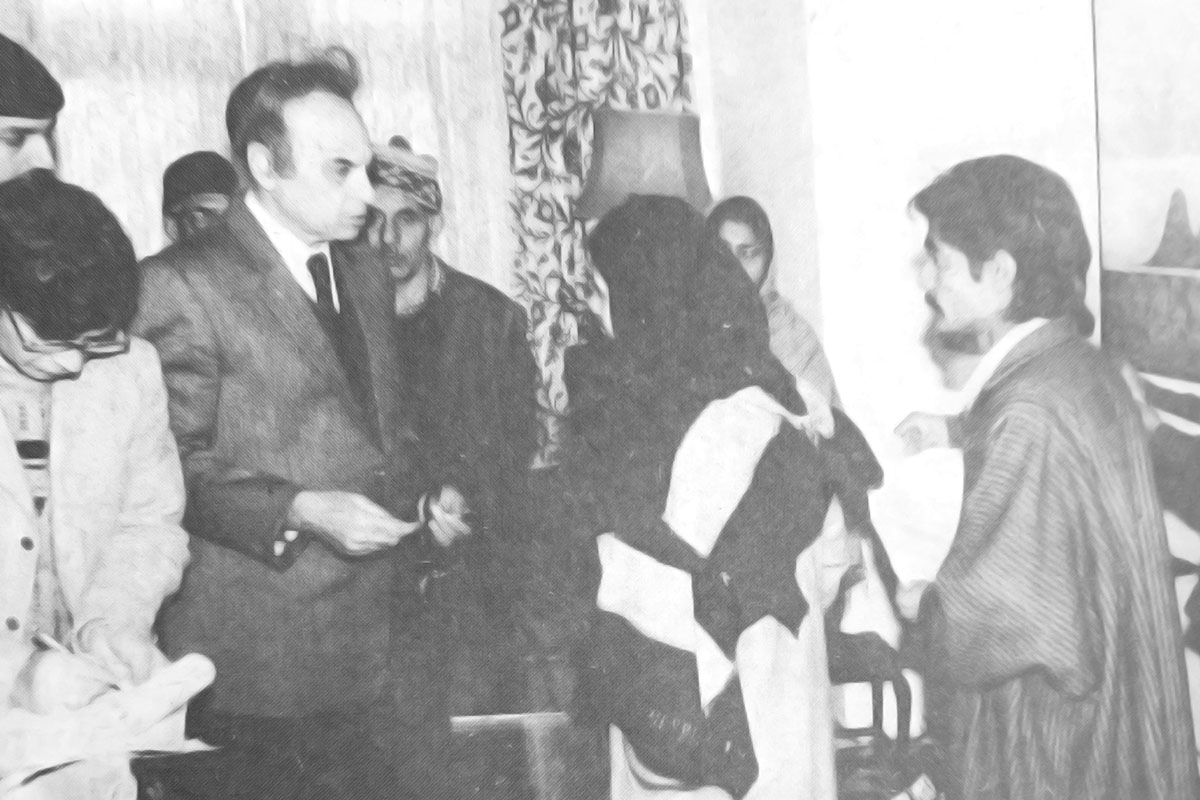
Fleeing from the stranglehold of Muslim militants in the valley, many of the migrants have landed straight in the lap of Hindu fundamentalists. These groups choose to ignore the fact that many Muslims too have fled the valley because of crippling curfews and breakdown of the administration. In Delhi itself, dislocated Muslims from the valley can be seen hawking the famed Kashmiri shawls and carpets. But such facts do not fit in, with the Hindu fundamentalists’ perception of the Kashmir problem. So at the refugee camps, they are spreading rumours that the militant movement is directed against non-Muslims; that militants are infiltrating camps to identify migrants.
So far, the administration has turned a blind eye to the communal propaganda. For instance, though Dalmia and other VHP leaders went to Jammu to sympathise with the refugees, they ended up exhorting them to support their cause. Said Dalmia at a public rally: “Why does VP Singh run to Bhagalpur with a Rs 1crore cheque? The money was distributed only among Muslims. He should come here with a Rs 2.5 core cheque.”
In a knee-jerk reaction, Jagmohan recently announced two new posts of relief commissioners and stated that camps would be set up in the valley itself and that government employees and pensioners forced to flee their homes would receive their money regularly. But such steps amounted to locking up the stable after the horse had bolted.
Many of the militants too are unhappy with the flight of Hindus. The Jammu & Kashmir Liberation Front (JKLF), in particular, realizes that an exodus on communal lines would eventually discredit their movement. In a written statement, four area commanders of JKLF recently offered to “retire” from the secessionist movement if it was “proved by an independent agency or media that they killed anyone only because he was from a particular community”.
An added twist to the problem is the hostility towards the migrants from some Jammu residents. Many Jammu Hindus harbour age-old prejudices against Kashmiri pandits who they believe corner all crucial government jobs and are more affluent.
With the fate of the migrants intertwined with the solution to the Kashmir problem, their ordeal threatens to be a long one. And if their plight is given a communal colour, it would have a disastrous impact. For a Hindu backlash will only strengthen the case of the Muslim fundamentalists in Kashmir.
The Exodus
Sunday Magazine,
July 12, 1990
Hindus flee the Kashmir Valley in fear
by Shiraz Sidhva in Jammu

As the first rains of the monsoon lashes against the Shamiana at Jammu’s Zanana Park, the slogan-shouting becomes more strident. Loudspeakers blare out patriotic songs: Lata Mangeshkar’s Oh mere watan ke logo in particular. “Don’t let the weather spoil our rally. Keep seated,” exhorts one of the organizers of the rally. “This is a good omen for us; maybe it signifies better times ahead for us all,” he adds. “Har Har Mahadev,” cheers the crowd with renewed vigour. The voices get more angry as the meeting gets underway. “The parched earth of our lives will soon be quenched,” promises an elderly speaker on the podium. But soon his rhetoric gets drowned. The crowd shouts back: “VP tere raj mein, Hindu maare jaate hai (VP, in your reign Hindus are being killed)”, and “Mufti teri boliyaan desh ke khilaaf hain (Mufti, your utterances are against the nation).”
Ever before have a group of people laboured so much to establish their national identity. The Kashmiri pandits who, after several hundred years, have had to flee the Valley out of fear from the Muslim majority, feel that they have been let down and betrayed by the government. “We were the ones who kept the tricolour flying high in Kashmir. But now, the government is doing little for us in return. Sometimes we feel it would have been better had we started shouting pro-Pakistani slogans,” shouts an angry young man. “We have run away from our homes to live like beggars in this land that we claim is ours,” he adds bitterly.
At the Nagrota camp, 25 kilometres out of Jammu, hot, dusty winds relentlessly sweep the barren land. Here, in the middle of nowhere, the state administration has allowed the Kashmiri migrants to pitch 500 tents provided by them. The heat is stifling – some lucky families have table fans on the mud floor, with electricity drawn from the poles along the road. But most of them simply rot. Sintex tanks provide trickles of water, barely enough for 25,000-odd people. The corrugated tin-sheds, which serve as latrines, are veritable furnaces; few inmates are willing to use them. The migrants lie in their tents for most part of the day – they have learnt from experience not to brave the fierce rays of the sun. Already, around 27 Kashmiri pandits have died of heatstroke. And the children are invariably suffering from heat rashes. “We sometimes give up eating vegetables so that we can afford to buy our children watermelons,” moans Susham Kaul, “they will die before this heat ends.” “Kuch de do, tadap tadap ke mar rahe hai (give us something, we are dying a slow and painful death),” begs an old woman, her arms outstretched. She left her home in the Valley in the dead of night on 14 March, after a relative lost her son to a militant’s bullet. This is the first time in 78 years that she has ventured out of the Valley.
The residents of Nagrota camp are trying desperately to survive with a little help from the government. Families who have registered themselves with the authorities have been provided with tents, free water and electricity, and medical facilities. Each family is given Rs 1,000 per month, nine kilos rice, two kilos of flour and an equal amount of sugar. “We usually finish the ration in just two days,” complains Sushil Bhan, pointing to his family of five. “Now we are used to salted tea as sugar is scarce.”
But the migrants are perhaps aware that they will have to stay on in the camps for quite some time. An enterprising young school teacher has set up a nursery in her tent. Each child pays a nominal fee of Rs 10. The heat and the unhygienic conditions may not be an ideal atmosphere to learn but the parents feel that it is better than missing out on school completely, and loitering in the sun all day.
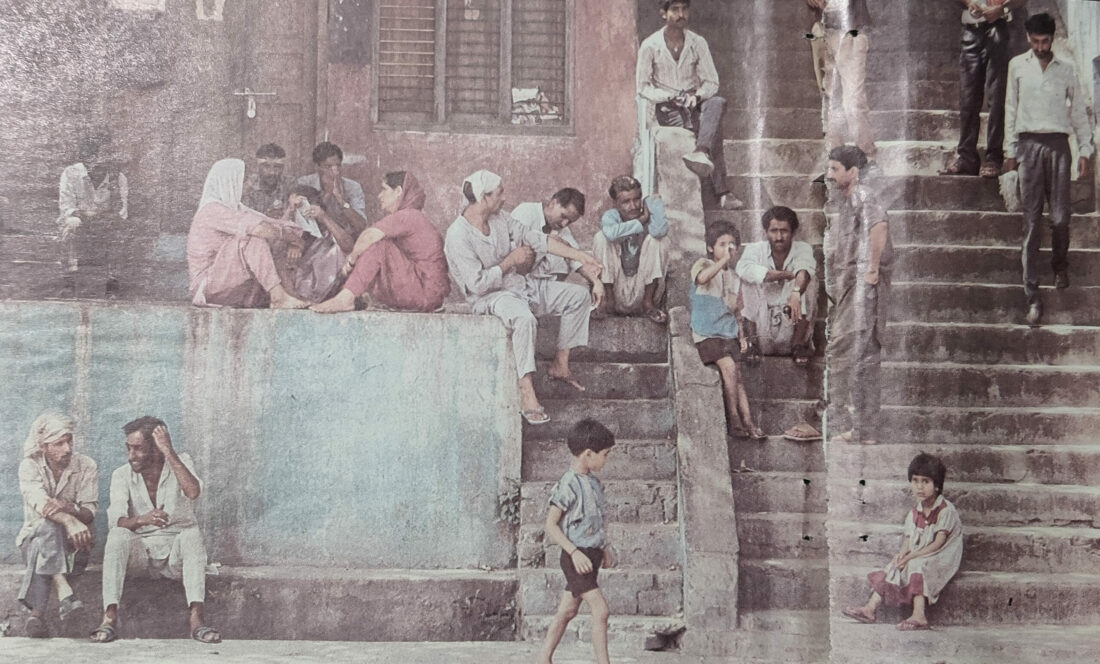
The migrants of the Nagrota camp have even set up a secondary school under a large banyan tree. For, very few of the 500-odd families here can afford to send their sons to a school in Jammu. Most of them depend on the teachers among the camp inmates.
The university students, who have paid lakhs of rupees as capitation fees to get a seat in a medical or engineering college in the Valley – this was commonplace during the Sheikh’s time, and his son did nothing to discourage it – are, however, the worst sufferers. They have missed out on a minimum of two academic years, and they do not know when they will be able to resume their courses.
But why did the Kashmiri pandits desert the Valley? Most families have the same stories to tell. “We were forced to join their (militants) processions,” says a government employee, who came away to the plains in late February. “We were prepared to demand azaadi only to please them, but when they forced us to shout pro-Pakistan slogans, we couldn’t take it anymore.”
For the Kashmiri pandits who have not been fortunate enough to have friends and relatives in the plains, Jammu’s Geeta Bhavan is the last refuge. A huge hall, the winding corridors and a spacious courtyard serve as a transit camp for those who have yet to be registered. This building in the heart of Jammu is managed by the Bharatiya Janata Party (BJP) and its allies – the RSS, the Hindu Mahasabha, the Hindu Suraksha Samiti, and the Kashmiri Pandit Samiti.
The influx of the migrants have, however, stretched Jammu’s meagre resources to a breaking point. Reacting strongly to the suggestion that the state government should find jobs for the migrants, a highly-placed state “government official argues, “We would have a civil war on our hands if we gave the migrants jobs. Already, the state machinery has come to a grinding halt because of the relief measures we are undertaking. These people will eventually have to go back to where they belong.” The official points out that medical centre’s have been set up at all 15 recognized camps, something that the administration was never able to provide the local populace with. “You judge for yourself and decide whether or not we are doing everything within our means to alleviate the sufferings of the migrants.”
The one party that has all along stood beside the migrants is the Bharatiya Janata Party (BJP). The party has distributed over Rs 40 lakhs worth of foodstuffs, plastic buckets, mugs, clothes and utensils among the homeless. Besides, the party’s Jammu unit under the leadership of Chaman Lal Gupta, has disbursed Rs 3.5 lakhs as cash relief for the ill. The BJP has also pressed into operation mobile vans to distribute free medicine. Reacting sharply to the allegation that the BJP is trying to gain political mileage out of a human tragedy, Gupta says, “It’s a human problem, and we have done our best in the circumstances.” Does the BJP extend its help to the hundreds of Kashmiri Muslims who have migrated to Jammu? “Of course, there are many instances where we have helped Muslim migrants too,” counters Gupta. “Anybody who speaks for India is entitled to help from us,” he adds.
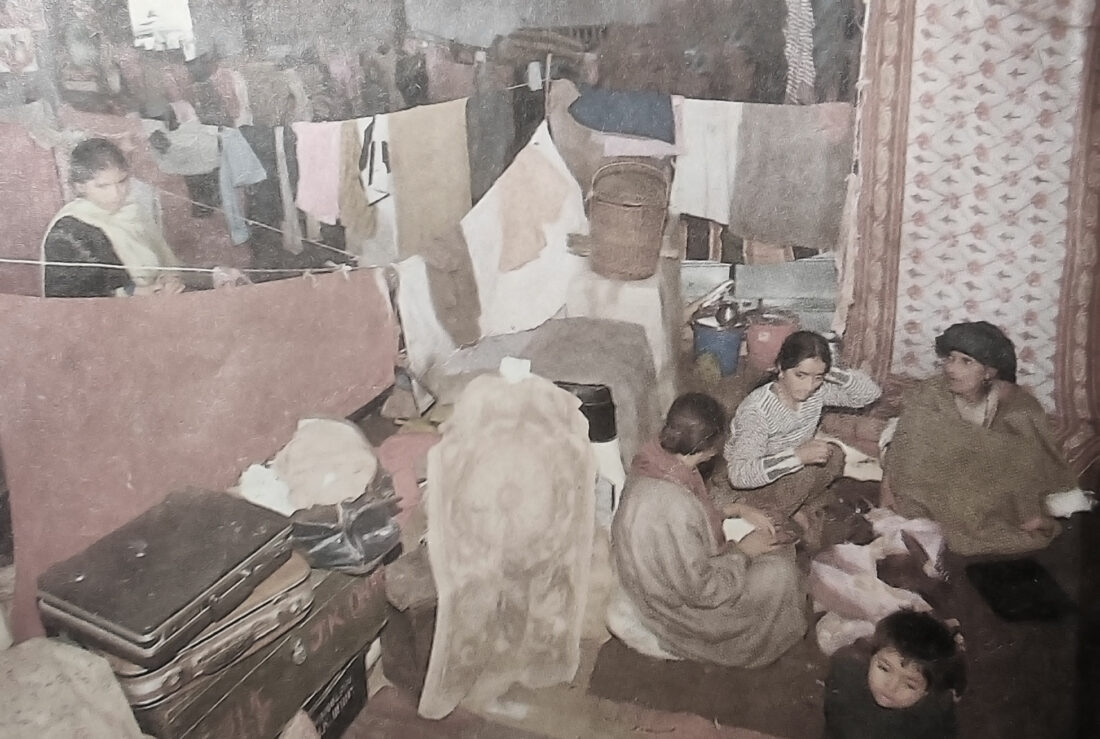
Jhiri, on the outskirts of Jammu, is the largest government-sponsored migrant camp housing over 950 families, many of them Kashmiri Sikhs. Their desperation to voice their woes brings people rushing out of their tents, even though darkness has already enveloped the camp. A nauseating smell of gamaxine and night soil hangs heavy in the air – the evening meal is eaten under the dim glow of petromax lanterns. Several tents have television sets while there are cylinders in others. The heat is unbearable during the day but the rains are not welcome. The tents leak and many of them are damp inside. There are the usual complaints that government rations are sub-standard and inadequate, that the fans don’t work and the administration is not being helpful enough. “This might be hell, but the new Governor is keen to banish us to a worse hell,” claims VK Razdan, an electrical engineer who fled the Valley. “How could the Mufti’s subordinate, Girish Saxena, order government employees to return when there are massacres daily?”
Whether Jagmohan actually instigated the Hindus to leave the Valley is debatable. But when they were in the Valley Jagmohan was their saviour. Now, he too has been removed. “While Jagmohan was Governor, there was some hope. We thought that we would be able to return to the Valley in a few months,” explains Sanjay Nath, a government employee who is infuriated because the new Governor had declared that those who did not return is June would lose their jobs. The “kala kanoon (black rule)” was hastily withdrawn following the protest march organized by the migrants. But Saxena’s image remains tarnished forever. “He was so cold and matter-of-fact when he came here: Jagmohan wept when he saw our plight. Whatever hopes we had of the Valley becoming peaceful again have been dashed overnight with the change of Governor.”
“The Kashmiri pandits will have to pick up guns if he is not accorded his true rights,” threatens Motilal Mattoo, a young government engineer, whose family paid Rs 5,000 for a truck ride to Jammu. “We have known only the kalam (pen) and the kitab (book), never the gun, and we are paying very dearly for our love for India. Maybe, the government will heed our demands if we say we are for Pakistan. The houseboat owners and the rickshaw-pullers are getting Rs 30,000 each as relief,” Mattoo adds.
That last statement has as much truth in it as the allegation made by the Muslims in the Valley that Jagmohan has given the migrant families land. “We never asked them to go away,” a JKLF leader insisted to this correspondent. “We are not against Kashmiri pandits; we are against those who stand in the way of our road to azaadi.”

There is little doubt that panic gripped the Hindus of the Valley before they decided to flee to the hot dusty plains below, and beyond, to Kathua, Udhampur, Delhi, and even as far as Madras. Several Kashmiri pandits, especially those who held government posts, were served threatening notices. Many of them were even identified by the militants as their targets. But even then, most Hindus wouldn’t have quit the Valley only if there was some kind of an assurance from the administration.
But former Governor did nothing of the kind – he, in fact, instigated them to flee their homes. One reason for this, points out a senior journalist in Jammu, may have been that Jagmohan was afraid that the Hindus would give the militants shelter out of fear or sympathy. There were some instances of Hindu families providing cover to militants in Chhanpora, the hotbed of terrorist activity. But more crucial, explains the journalist, was the fact that Jagmohan sided with the Hindus and was reluctant to subject them to the harsh measures that he advocated for those left in the Valley. It suited him that they ran away.”
The future of the migrants is indeed grim. Few of them have the courage to return to their homes, for fear of being killed. And today, there is a distinct possibility that they would be. The militants are furious that the Kashmiri pandits have won the sympathy of the nation by spreading false stories about them. Life is definitely going to be difficult for the Kashmiri Pandits.















